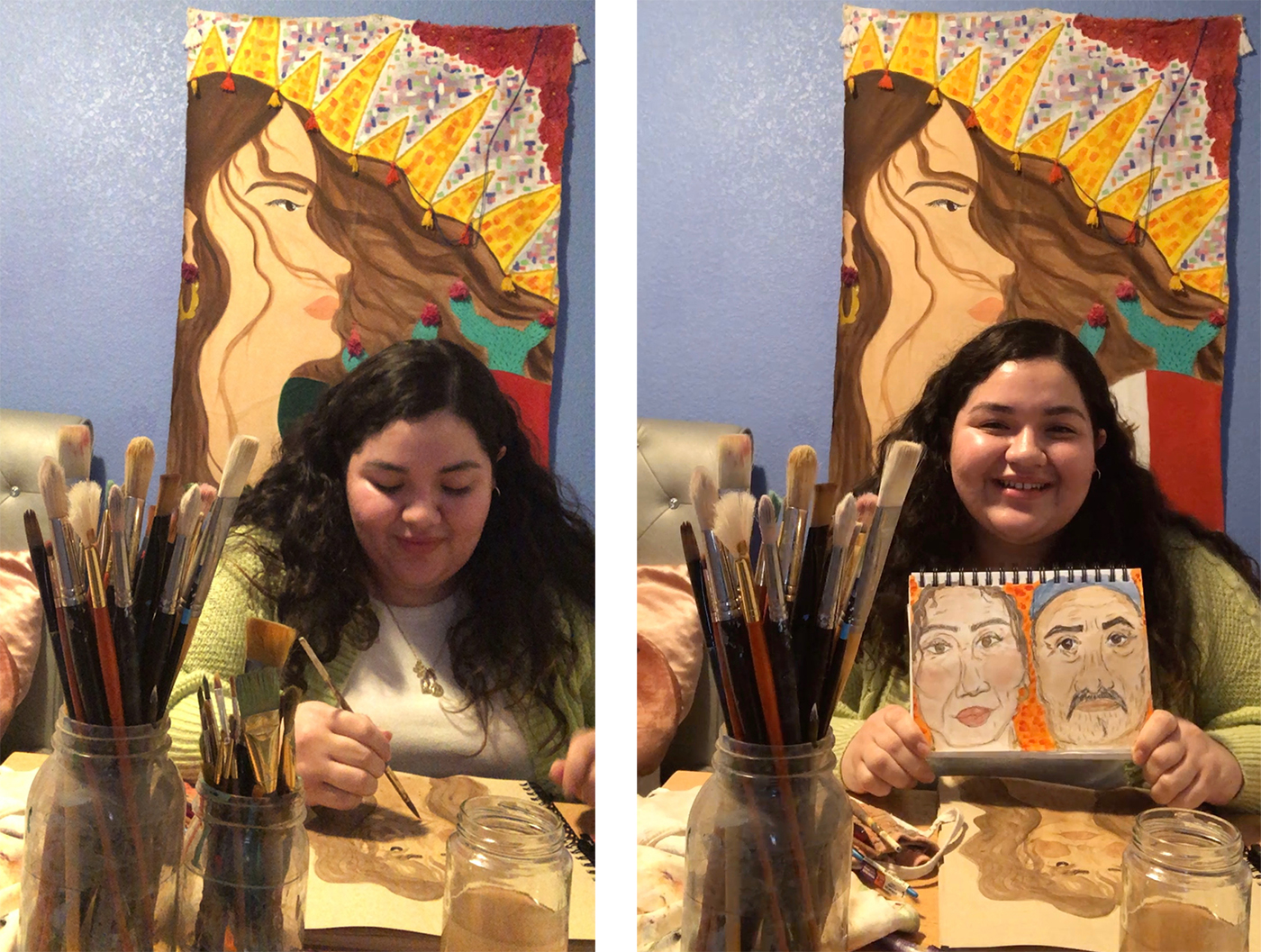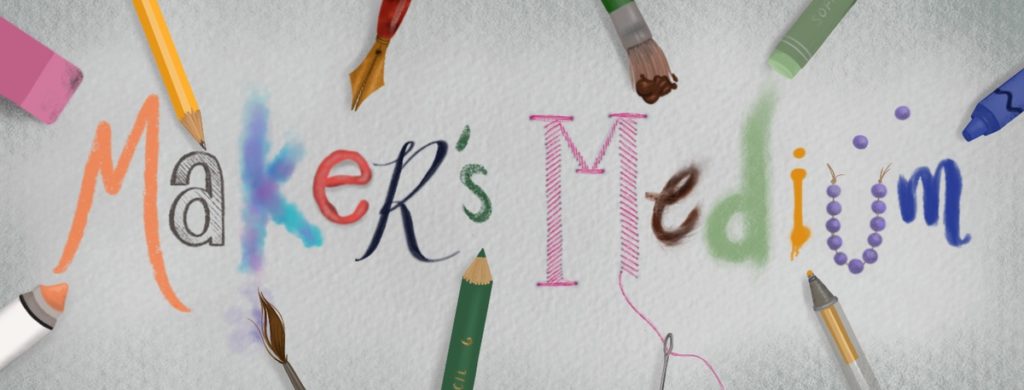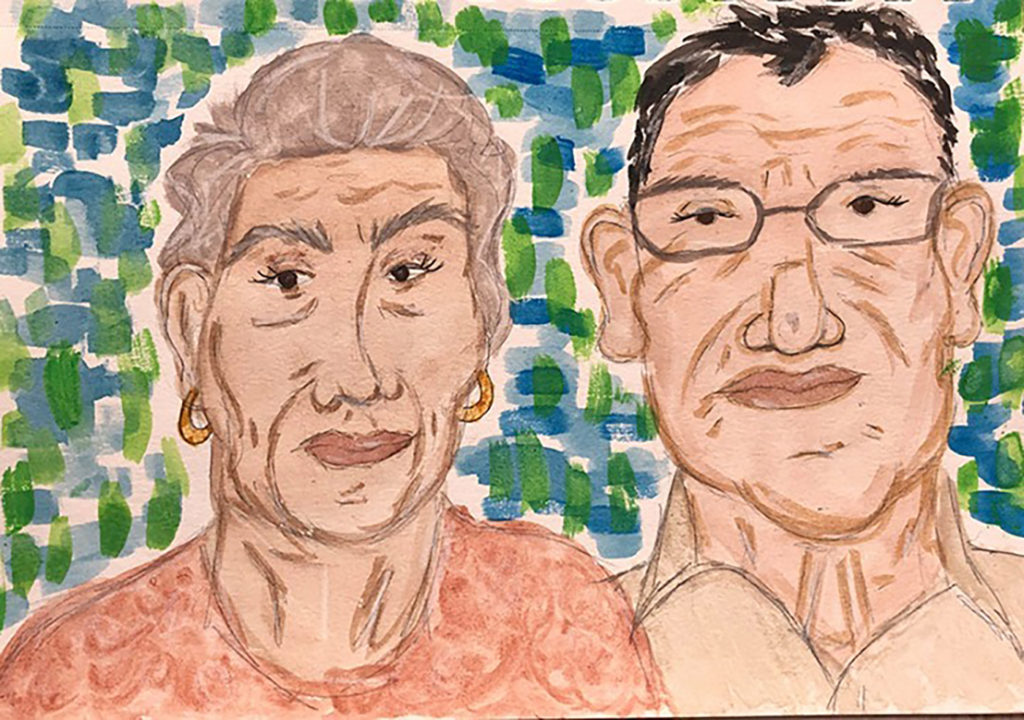Maker’s Medium: Art student explores the wonders of watercolor through familial portraits

Student artist Antonia Guerrero Sanchez’s medium of choice is watercolor, which she often uses to paint portraits of her family members. (Sakshi Joglekar/Daily Bruin staff)
By David Egan
Jan. 8, 2021 7:01 p.m.
The mastery of materials is fundamental to the artistic process and the career goal of any artist in their chosen medium. Every method requires a different skill set and can evoke different reactions in viewers. Follow columnist David Egan in “Maker’s Medium” as he highlights the mediums of the fine arts by profiling a different undergraduate art student each week.

Watercolor painting started in antiquity and continues with undergraduate artist Antonia Guerrero Sanchez.
A second-year art student, Sanchez said she has been interested in art from a young age. Watching a Frida Kahlo documentary with her father was what inspired her to pursue art, she said, in addition to a middle school teacher who motivated her. Sanchez started painting with watercolors after taking an art class her junior year of high school, in which paints from the brand Yarka were a required material. These watercolors are more translucent than gouache paint, another material Sanchez said she uses.
“Oil takes too long to dry, and acrylic I kind of grew out of it in a way,” Sanchez said. “I didn’t have any gouache on me, so I used … Yarka, and they’re semimoist watercolors. … I fell in love with them.”
Sanchez is connected to the world’s earliest artists through her medium. Artists have used watercolor for illustration since ancient Egypt, where pigments mixed with gum arabic and egg white were diluted in water and applied to scrolls, to the Renaissance, where watercolor was used on a small scale, explains José Parramón in “The Big Book of Watercolor Painting.” Through the 16th and 17th centuries, artists used watercolors for preliminary sketches, but it was not until the late 18th century that watercolor was recognized as a legitimate medium for its own sake. Watercolor’s slow road to recognition came from the quickness with which it is used, the way it abstracts figures rather than giving precise detail and the translucency that is atypical from more traditional mediums.
[Related: With bold strokes, student uses her art as medium for activism]
Today, watercolor is practiced in many art schools, including UCLA’s. Painting and drawing lab supervisor Ben Evans said he often helps artists with the technique of watercolor. It is widely accessible, easily transportable and can be forgiving if artists learn techniques about applying and lifting pigment, he said. Painting and drawing professor Patty Wickman said the medium is a quick way to lay down color.
“(Watercolor) probably doesn’t receive as much attention in the art world as other materials do,” Wickman said. “It’s usually used on a more intimate scale. A lot of the preference and predilection within the art world for working on a large scale makes it tricky to use watercolor.”
The intimate scale of watercolor mirrors the personal subjects in Sanchez’s work. She paints those closest to her, including her parents, her sister and extended family. Though the close-up portraits fill the entire area of the paintings, Sanchez said the details are her favorite part of painting, such as the wrinkles on her father’s face and the thin eyebrow strokes and curls of her nephew’s hair.

The positioning of figures in the paintings of her paternal and maternal grandparents is especially notable, Evans said. On the paternal side, the grandmother is in front of the grandfather, while in the maternal grandparents’ portraits, the heads are directly side by side. Since two people cannot physically face forward while standing so close, he said Sanchez forces the viewer to look at figures in unnatural ways while using a natural brushstroke and palette.
Looking at the same series, Wickman said the painting of Sanchez’s paternal grandparents is the strongest piece among all her watercolors. In addition to the way the grandfather’s shirt can be read as an abstraction of the chest and throat, Wickman said the closeness of the figures contrasts with their presence as distinctive individuals, making the work interesting in its formal elements and emotional impact.
[Related: Student uses heritage in art to challenge beauty standards, tackle social issues]

In addition to painting her grandparents, Sanchez painted her parents in a triptych titled “Fruit Bowl,” with a bowl of fruit in between the figures. Sanchez said her parents often bring her fruit, her father bringing cucumbers or oranges and her mother bringing guavas. Her father wears a mask with marijuana leaves in “Fruit Bowl” as reference to an inside joke they have – that he is the opposite of a stoner, Sanchez said.
There would be a looseness to the portraits if they were only line drawings, Evans said, but the slow brushwork shows the time Sanchez put into the work. The use of watercolor is effective for the faces because skin isn’t a fully reflective surface, he said. Like watercolor applied to paper, he said skin has layers and the translucency of a watercolor painting can mimic the depth of light hitting someone’s face.
“The beautiful part about her mother’s (portrait) is the transition of the hair in the background,” Evans said. “As far as making the most out of your painting material, … (it’s) quite effective.”
Wickman has used watercolor in her own work, and can attest to its strengths and difficulties as a medium. She said she is curious about how many students will be using it in her advanced painting class this quarter.
“A lot of students are turning to watercolor right now, especially in the pandemic, because they’re working in smaller spaces,” Wickman said “(Watercolor) is not something I’ve really considered that much recently, but it has come back.”


